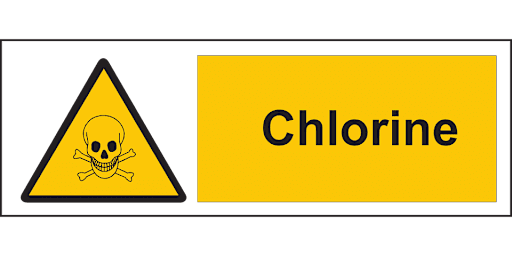
Chlorine Safety
Understand the safety hazards and protective measures for working with chlorine in the lab
Chlorine is a naturally occurring element that is used in a variety of ways because of its ability to bond with other elements. However, chlorine’s bonding ability is also what makes it a very dangerous chemical. By itself, chlorine is a stable element and is classified as non-flammable. But, in combination with other elements, chlorine becomes extremely reactive.  Also, because chlorine gas is 2 ½ times as heavy as air, it will usually remain close to the ground and tend to collect in low areas or pockets and in confined spaces, where it will displace clean breathing air. Additionally, when chlorine collects in low areas or pockets it creates a very hazardous atmosphere if combustibles are present.
Although chlorine is classified as non-flammable, it will support the burning of most combustible materials, just as oxygen does. Contact between chlorine and flammable or combustible substances should be avoided, because of the potential for fires and explosions. In addition to being highly reactive, chlorine will combine readily with moisture, steam, and water. It is a strong oxidizer and is corrosive to most metals. In solution with water, it forms a corrosive material that will attack many forms of plastics, rubber, and other coatings. So, you can imagine how it can be so damaging to the human body.
Chlorine is a strong irritant to the eyes, the upper respiratory tract, and the lungs. Acute exposure is described as both blinding and completely suffocating, stealing air through displacement and chemically scorching the lungs—all of which causes panic.
Chlorine exposure has its most serious effects on the lungs when it is inhaled. This can cause the airways to close up or fluid to develop in the lungs. Chlorine can also be ingested, or eaten, with chlorine contaminated food or water and it can be absorbed into the bloodstream if it comes in contact with the eyes and skin.







